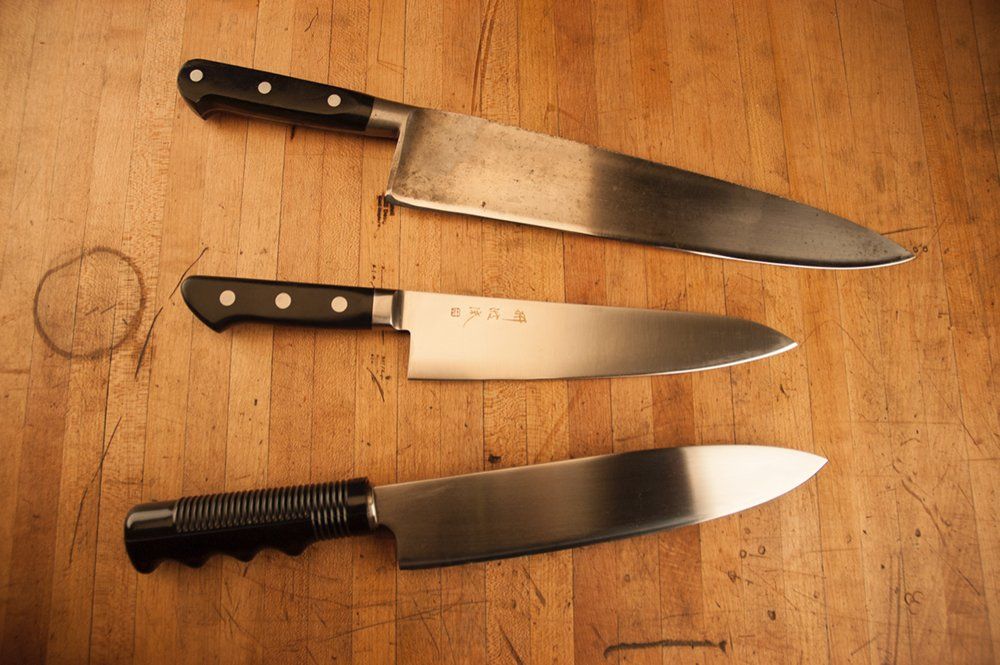The most basic distinction you’ll hear made with respect to blade material when beginning your knife search is between Stainless and Carbon steel.
That can be a bit misleading as any Stainless alloy used for a culinary blade will necessarily have about as much Carbon in it as a comparable Carbon steel alloy. The big difference is the presence of over 14% Chromium. Chromium is what confers corrosion resistance on the blade, making your knife much easier to care for.
But Chromium also comes with a negative side effect called work hardening. When the sharp edge of a Carbon steel blade is bent over microscopically during normal use, it can be bent back straight a number of times before it ultimately fatigues and breaks off (think of bending a paperclip back and forth repeatedly). This makes Carbon Steel blades easy to keep sharp (this ‘bending back’ of a bent over edge is what you’re doing when you hone the edge with a traditional butcher’s steel).
The same scenario with an otherwise identical Stainless blade will result in a chipped knife edge, as once the material is bent at a point, that point becomes brittle. Furthermore, that chip, if left unrepaired will beget additional (often invisible) damage to the crystal structure of the steel material in close proximity to it.
The more chips, the more easily chipped the edge will become and the more damage will accrue. That said, the degree to which a stainless knife chips due to work hardening varies considerably with the exact type of material (do your research!!), how carefully the blade is heat treated, and how it’s worked after heat treat (excess heat build up during grinding or finishing can cause serious damage to the blade’s ability both to take and hold an edge).
While good Carbon steel knives don‘t chip nearly as easily as Stainless they are just as vulnerable to heat damage during production. Also, they demand a considerable amount of additional care (wash, dry, oil).
As much fun as it is to compare shiny new knives to one another, it really pays to compare knives that are well used and admittedly in need of sharpening (snoop in friends’ kitchens, or ask a professional knife purveyor or better, a sharpener to comment on knives you‘re considering investing in as to how much damage they typically have to get through to get knives made of similar steel back to sharp (and shiny).

